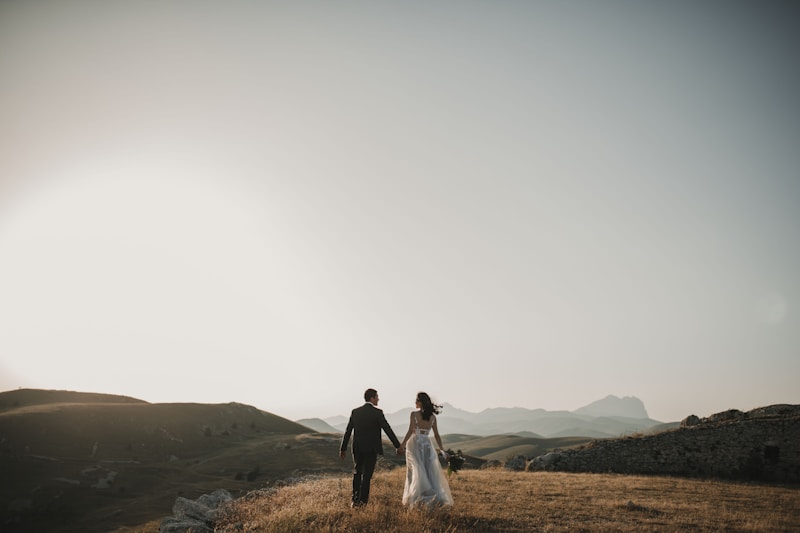Choosing the Right Underlining Fabrics for Custom Wedding Dresses: A Comprehensive Guide
Choosing the Right Underlining Fabrics for Custom Wedding Dresses: A Comprehensive Guide
When it comes to creating the perfect custom wedding dress, the choice of underlining fabric is crucial. This often-overlooked element can significantly affect the overall look, feel, and structure of the gown. In this article, we will delve into the various types of underlining fabrics, their applications, and how to choose the one that best suits your bridal vision.
Understanding Underlining Fabrics
Underlining fabrics are typically used to support the main fabric of the dress. They provide additional structure, durability, and can also influence the drape and flow of the garment. Choosing the right underlining fabric can enhance the beauty of the overall design, ensuring that the bride feels comfortable and confident on her very special day.
Common Types of Underlining Fabrics
Several types of fabrics are commonly used for underlining in custom wedding dresses. Let’s explore some of the most popular options:
| Fabric Type | Characteristics | Best Uses |
| Muslin | Lightweight, breathable, and inexpensive | Perfect for mock-ups and experiments |
| Cotton Batiste | Soft, lightweight, and provides good drape | Ideal for flowy, romantic silhouettes |
| Organza | Sheer, crisp, adds volume and structure | Best for ball gowns and layered skirts |
| Satin | Luxurious, smooth; heavier than other options | Great for more structured designs |
| Tulle | Light, airy, and somewhat stiff | Used for creating volume and shape in skirts |
Factors to Consider When Choosing Underlining Fabrics
Having understood the common types of underlining fabrics, here are several factors to keep in mind while choosing the right fabric:
1. Purpose of the Dress
Consider the overall style of the wedding dress. Is it a sheath, ball gown, or A-line? Different styles require different types of support. For instance, a ball gown may benefit from a stiffer underlining fabric like organza, while a sheath dress might look best with something lighter, like cotton batiste.
2. Fabric Weight
The weight of the underlining fabric will affect the drape and silhouette of the dress. Heavier fabrics will create a structured look, which is ideal for more formal styles, while lighter fabrics can lend themselves to a more romantic, flowing effect.
3. Texture and Finish
The texture of the underlining fabric should complement the main fabric of the dress. For example, a satin wedding dress may require a smoother underlining, while a lace gown may benefit from a softer touch to maintain comfort and stability.
4. Breathability
Weddings can last all day, so it is essential to choose fabrics that are breathable and comfortable. Look for natural fibers such as cotton for good airflow, especially in warmer climates.
5. Color Matching
Finally, consider the color of the underlining fabric. It should either match the main fabric or be in a shade that complements it without being too overpowering.

Tips for Working with Underlining Fabrics
Once you’ve selected the appropriate underlining fabric, consider the following tips to ensure your custom wedding dress turns out beautifully:
1. Pre-Wash Fabrics
Always pre-wash your fabrics before cutting. This will prevent shrinking and ensure the underlining retains its intended look and feel throughout the event.
2. Testing Stability
Before committing to a particular fabric, perform a wash test on a swatch to ensure that there is no color bleeding or deterioration of texture.
3. Sew with the Right Techniques
When sewing the underlining to the main fabric, using techniques like stay-stitching can help maintain the shape and prevent distortion.
Frequently Asked Questions
What is the difference between underlining and interlining?
While underlining is used to support the main fabric, interlining refers to a layer placed between the outer fabric and the lining to provide additional warmth and structure.
How do I choose the right underlining for lace wedding dresses?
For lace wedding dresses, choose soft, lightweight fabrics like cotton or silk organza that won’t overwhelm the delicate lace pattern while providing enough support.
Can I use the same fabric for both the dress and the underlining?
Though it’s possible, using different fabrics allows for variation in weight, texture, and structure, enhancing the design's complexity and beauty.
Final Thoughts
Choosing the right underlining fabrics for custom wedding dresses is not just about aesthetics, but also about comfort and function. Take the time to consider the type of fabric, its properties, and how it works with your overall design vision. Remember to conduct tests, such as wash tests, to ensure durability and satisfaction.
Ultimately, your wedding dress should embody your personality and style, allowing you to walk down the aisle with confidence. By understanding the role of underlining fabrics, you can make informed choices that result in a gorgeous, well-structured gown that you will cherish for a lifetime.
As you embark on your wedding dress journey, keep these tips and considerations in mind to ensure that you choose the perfect underlining fabrics for your custom creation. Happy planning!
